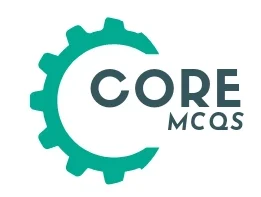12th class (Fsc) Chemistry unit 14 MCQs
26. Which one is not water- soluble compound?
a. Starch
b. Lactose
c. Maltose
d. Sucrose
27. Starch is a polymer of:
a. Fructose
b. Alpha-D-Glucose
c. None of these
d. Beta-D-glucose
28. Starch is not a pure compound but is a mixture of:
a. Glycogen and amylopectin
b. Amylose and amylopectin
c. Galactose and manose
d. None of these
29. Plants produce cellulose every year:
a. 200 billion tons
b. 10 billion tons
c. 300 billion tons
d. 100 billion tons
30. Which one of the following is an example of aldohexose?
a. Fructose
b. Ribose
c. Glucose
d. Sucrose
31. Which one of the following is a non-reducing sugar?
a. Glucose
b. Glyceraldehydes
c. Sucrose
d. Fructose
32. Which of the following carbohydrates give dark bule color with iodine:
a. Cellulose
b. Glucose
c. Sucrose
d. Starch
33. Glucose cannot be classified as:
a. Carbohydrate
b. Hexose
c. Oligosacharide
d. Aldose
34. Fructose, a hexose sugar have a …… structure.
a. Tetrahedral
b. Pentagonal
c. Pyramidal
d. Hexagonal
35. Which one of the following is a trisacharide?
a. Raffinose
b. Glucose
c. Maltose
d. Soucrose
36. Which are carcinogenic class of compounds?
a. Fatty acids
b. Dioxines
c. Proteins
d. Lower alkanes
37. The name of protein is derived from Greek work Proteios which means:
a. Prime importance
b. Many monomer
c. Protein is present in
d. No importance
38. Protein is present in:
a. Hair
b. Muscle
c. Skin
d. All of these
39. On the basis of physico-chemical properties, proteins are classified in to:
a. 4 classes
b. 2 Classes
c. 5 classes
d. 3 classes
40. The protein, which on hydrolysis yield only amino acids or their derivatives are called:
a. Compound protein
b. Simple protein
c. Conjugated protein
d. Derived protein
41. The structure of protein can be discrupted by:
a. Heat
b. Change in Ph
c. Both a and b
d. None of these
42. Caesein is a protein, which is used in the manufacture of:
a. Buttons
b. Buckles
c. Both a and b
d. None of these
43. The destruction of biological nature and activity of proteins by heat or chemical agent is called:
a. Denaturation
b. Dehydration
c. Polymerization
d. Oxidation
44. The protein with a prosthetic group are known as:
a. Conjugated proteins
b. Complex protein
c. Essential proteins
d. Secondary proteins
45. Which of the following is an example of simple protein:
a. Albumin
b. Oligopeptide
c. Lacithin
d. Cholestrol
46. The reaction between fat an NaOH is called:
a. Fermentation
b. Esterification
c. Saponification
d. Hydrogenlysis
47. The amount of free fatty acids in fats and oil is determined by:
a. Iodine number
b. Acid number
c. Gold number
d. None of these
48. When oils and fats are treated with caustic alkalies the reaction is known as:
a. Saponification
b. Hydrogenation
c. Hydrolysis
d. Esterification
49. To which of the following class of organic compounds soap belongs?
a. Amines
b. Salts of organic acids
c. Ester
d. Aldehydes
50. Which of the following is not glycerides?
a. Oil
b. Soaps
c. Fat
d. Phospholipid
